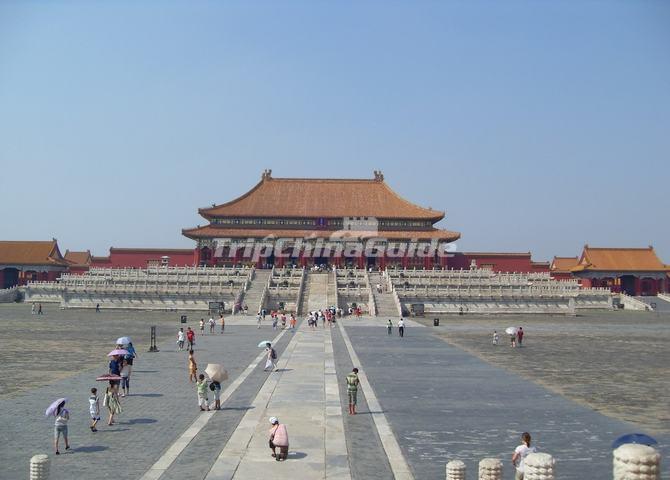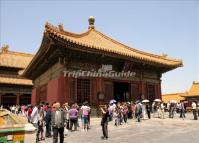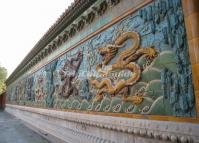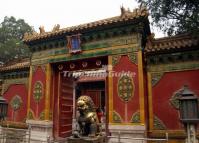Hall of Supreme Harmony (Taihe dian)
The Hall of Supreme Harmony sits in the center of the Forbidden City, on the Imperial Way (yu lu) – the remarkable section of the invisible central axis of the city. As the Imperial Way ascends the white marble three-tiered terrace it is carved with dragon patterns that extend all the way through the throne hall. During grand rituals or ceremonies, the emperor ascended the throne to imperial music, inspecting the empire as far as he could, receiving greetings and congratulations from his subjects.
The Hall of Supreme Harmony is the largest hall in the Forbidden City, and architecturally the highest-ranking building of the surviving traditional architecture in China. Golden dragon designs dominate the hall's exterior and interior décor. The ten figurines at each of its roof corners distinguish it as superior to other ancient buildings.



















































































































